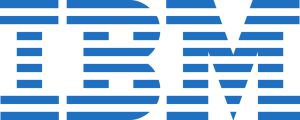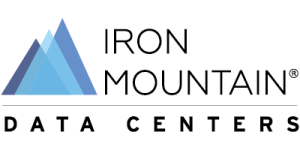Allnodes Launches Bare-Metal Servers for Solana Validators and Builders
The Evolution of Blockchain Infrastructure in 2025Blockchain has outgrown its roots as a speculative financial instrument. In 2025, it’s the underlying architecture for a growing number of real-world applications: payment processing, DeFi, tokenized real estate, digital identity, and even AI model governance. As these applications expand, so does the demand for reliability, speed, and security in blockchain infrastructure. And few networks are feeling that pressure more than Solana.Known for its lightning-fast transaction speeds and low fees, Solana has become the preferred blockchain for developers building high-performance decentralized applications (dApps). However, the demands of running validator nodes, RPC endpoints, and indexers on Solana have grown significantly. That’s why Allnodes, a leading infrastructure provider in the crypto space, has stepped forward with a bold offering: a specialized line of bare-metal servers engineered specifically for Solana validators and blockchain builders.This isn’t just a niche product launch—it’s a significant evolution in how decentralized networks are hosted, secured, and scaled.Why Bare Metal? The Blockchain Use CaseMost blockchain infrastructure today runs on cloud platforms like AWS, Azure, and Google Cloud. These platforms are accessible and scalable but come with drawbacks that are increasingly at odds with what high-performance blockchains need:Shared environments prone to “noisy neighbor” performance issuesHigher latency from virtualized layers and hypervisorsCentralized points of failure that undermine blockchain decentralizationRegulatory exposure due to cloud data sovereignty issuesIn contrast, bare-metal servers offer:Dedicated compute resources — no virtualization, no sharingLower and more predictable latencyHigher disk IOPS and memory bandwidthGreater transparency and control over geographic and jurisdictional placementFor validator node operators and RPC providers on Solana, where network uptime, latency, and speed are mission-critical, these benefits are game-changing.Inside the Allnodes Bare-Metal LineupAllnodes is offering three tiers of bare-metal servers under the “Solana Stack” brand. Each tier is optimized for a different type of operator.Tier 1: Validator Performance NodesCPU: AMD EPYC 9354P, 32 cores, 3.25 GHzRAM: 256GB DDR5 ECCStorage: 2TB NVMe Gen4 SSD + 4TB SATANetwork: 25GbpsUse case: Ideal for running high-uptime validator nodes with failover redundancy and snapshot capabilityTier 2: RPC Full NodesCPU: Intel Xeon Gold 6348, 28 coresRAM: 128GB DDR4Storage: 1TB NVMe + 8TB HDDNetwork: 10GbpsUse case: RPC providers, relayers, indexers, analytics servicesTier 3: Developer Test NodesCPU: AMD Ryzen 7950X, 16 coresRAM: 64GBStorage: 2TB SSDNetwork: 1GbpsUse case: Developer sandboxes, local chain forks, pre-launch simulationAll servers are deployed in ISO 27001-certified data centers across North America and Europe, with plans to expand into Asia by late 2025.How This Empowers the Solana EcosystemSolana’s architecture—specifically its Proof of History (PoH) consensus—relies on fast and reliable data propagation between validators. Latency and compute bottlenecks aren’t just inconvenient—they can lead to missed block opportunities, slashings, and reduced earnings for validators.By offering bare-metal infrastructure:Validators reduce block propagation delaysRPC nodes serve requests faster and more reliablyDevelopers can simulate real-world conditions more accuratelyIn addition, because bare-metal nodes are not subject to the same cloud provider risks (like AWS outages or IP blacklisting), they enhance the overall decentralization and resilience of the Solana network.The Business Model: Nodes as a Service (NaaS) 2.0Allnodes is also refining its monetization strategy. Traditionally, they offered hosting and staking-as-a-service. Now, with dedicated bare-metal options, they’re adding:Subscription pricing with tiered plans ($199 to $1,200/month)Zero-margin hardware resale for those who want full ownershipManagement dashboards with real-time node health, performance, and revenue trackingSLAs with 99.99% uptime guaranteesThis is not just a server rental—it’s a fully managed infrastructure product designed for professionals.Real-World Demand: From Hobbyists to Institutional ValidatorsOver 200 operators had pre-registered for Allnodes’ bare-metal servers within 48 hours of launch. Many are moving from self-hosted rigs or cloud-based nodes after experiencing:Excessive downtimeCost unpredictabilityRegional outagesResource throttlingMajor staking services like Figment, Chorus One, and Everstake have begun diversifying workloads away from AWS in favor of direct infrastructure providers like Allnodes.Even institutional players—hedge funds, custodians, and exchanges—are exploring Allnodes’ infrastructure for running proprietary Solana RPCs to improve latency-sensitive DeFi operations.Regulatory and Security ConsiderationsBare-metal hosting has the added benefit of jurisdictional clarity. When you know where your server sits, what laws apply, and who controls physical access, you get:Better compliance with GDPR and financial regulationsThe ability to provide audit trails for node activitySimplified reporting for staked asset managementAllnodes further secures its fleet through:Hardware encryption via TPM and AES-NI24/7 physical security and access loggingAir-gapped signing options for validator key managementIn a world where blockchain infra is increasingly under legal scrutiny, these features provide operational peace of mind.Long-Term Impact on the Validator MarketAs more proof-of-stake networks move toward restaking, MEV markets, and high-frequency block validation, node performance becomes paramount. Allnodes’ new bare-metal offering could change the validator economy in several ways:Increase validator ROI by reducing downtime and missed slot penaltiesRaise decentralization by removing reliance on cloud oligopoliesLower barriers for developers to test and scale decentralized appsThis could have ripple effects not just for Solana, but for similar networks like Aptos, Sui, and NEAR.Developer-Centric Perks and Ecosystem IntegrationBeyond the infrastructure, Allnodes is launching a “Solana Builders Portal” that includes:Access to high-fidelity testnetsPrebuilt infrastructure templates (Helius, Metaplex, Jupiter)GitHub CI/CD plugins for deploying directly to bare-metal nodesUsage credits for early-stage projectsThey are also integrating with Helium, Render, and Filecoin to explore decentralized physical infrastructure networks (DePIN) use cases.The Timing: Why Now?A convergence of macro and technical trends makes 2025 the ideal moment for this launch:Cloud costs have surged 20–40% YoYSolana is processing over 500 million transactions dailyAI and DePIN use cases are risingHardware availability is stabilizing post-pandemicThe Solana community wants more decentralization, more control, and better economics—and Allnodes is responding at the perfect time.
























